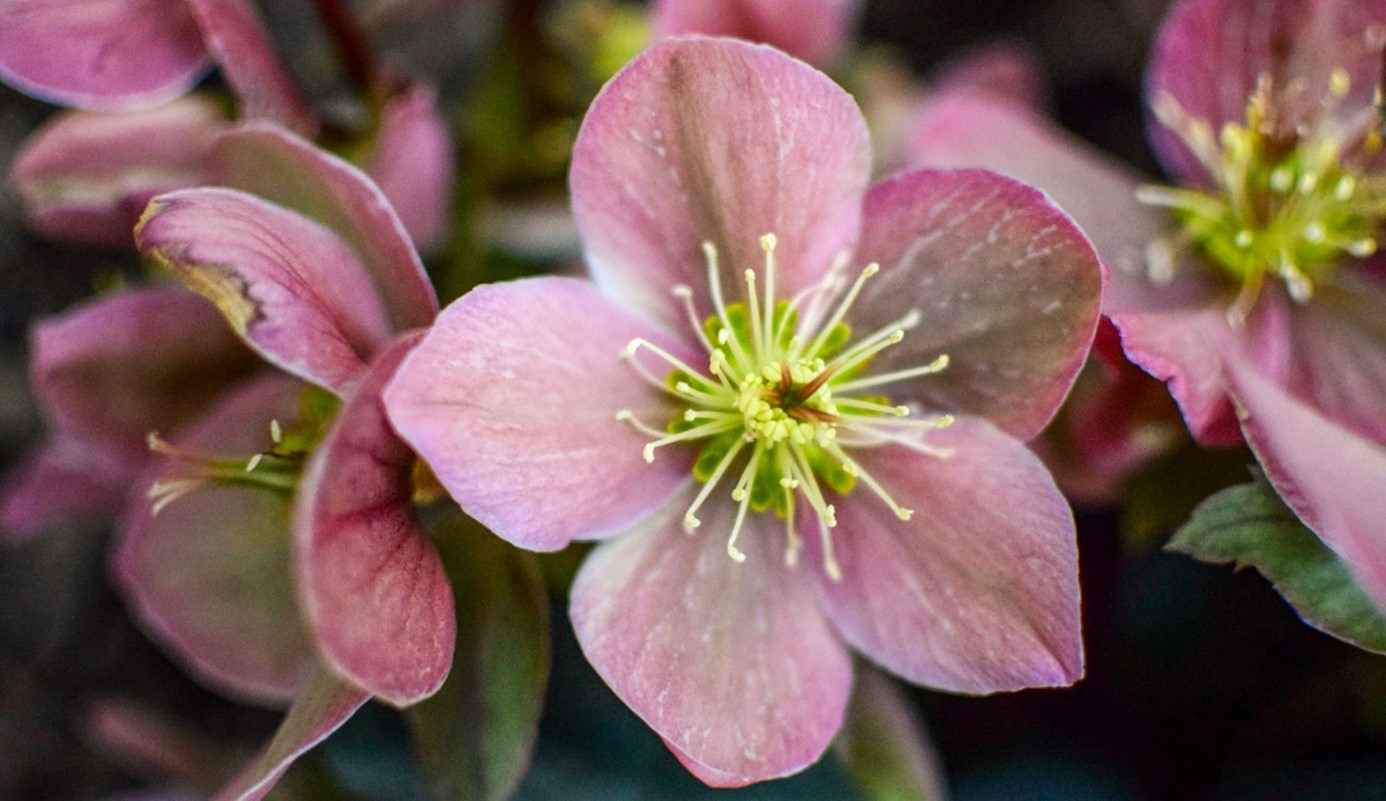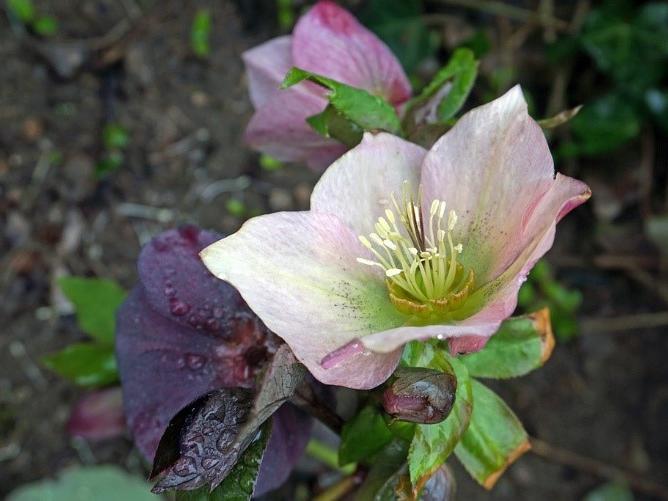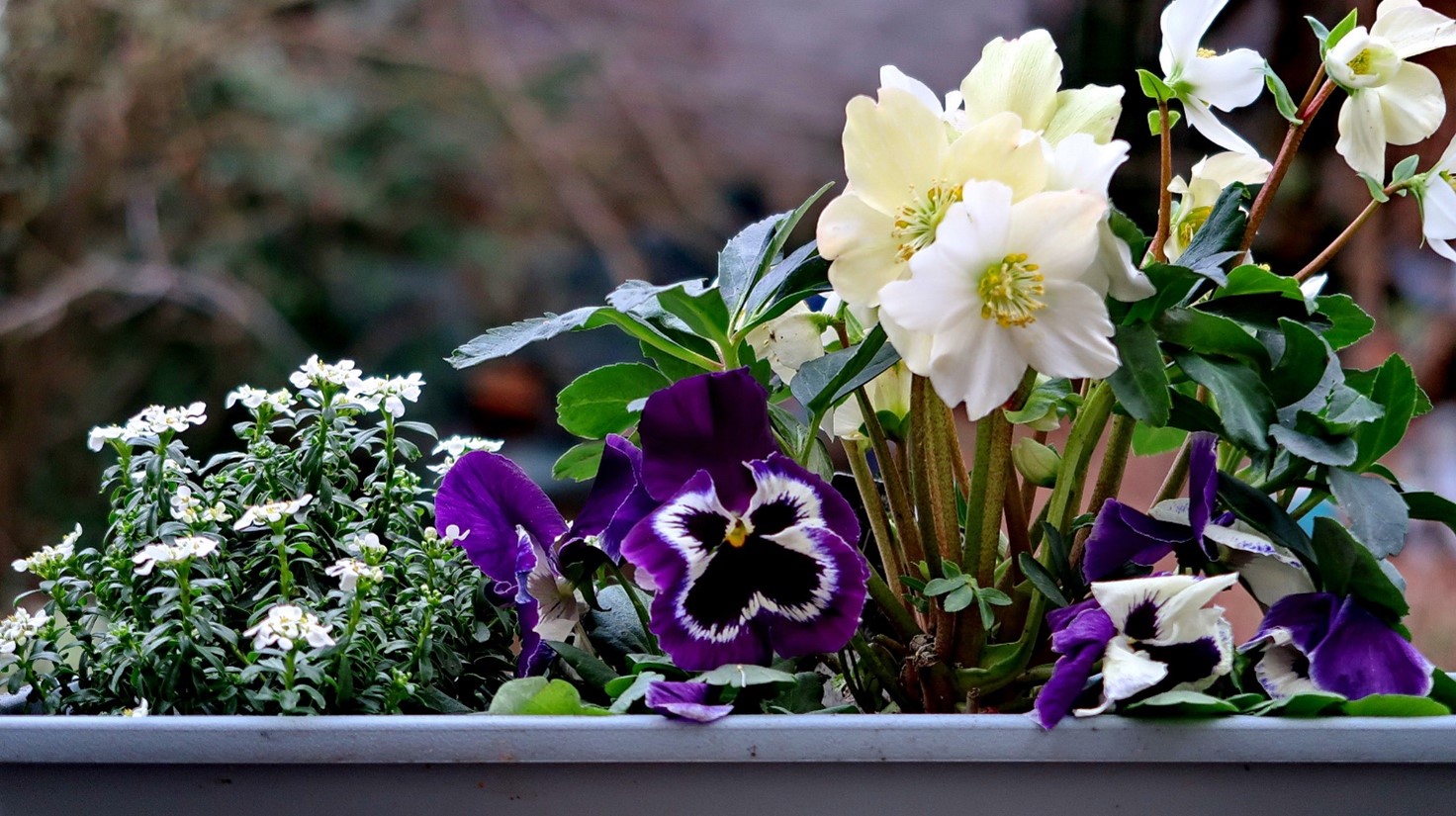Magnificent hellebores bloom when the rest of the garden is in hibernation. Ideal for adding a splash of color to your garden beds in winter, they can withstand the cold as long as they're planted in a sheltered spot on the balcony or terrace. They can also be grown in pots (outdoors).

Indoors, hellebores are often used as Christmas decorations (as are poinsettias), but are then abandoned or even thrown away once the festivities are over. However, with a little care, they can be replanted in the garden and kept for several years.
Origin of hellebores
A member of the Ranunculaceae family, the Helleborus genus comprises 15 species of evergreen and non-evergreen perennials native to the forests of central and southern Europe and Asia Minor. Helleborus niger (also known as Christmas rose) is the best-known variety. It grows naturally in the Alps, Carpathians and Apennines.



Known since antiquity as a medicinal plant. Helleborus has been found in Central European gardens since the Middle Ages. At the time, it was reputed to ward off evil winter spirits. But it was not until the 19th century that new varieties with larger flowers and more abundant blooming appeared, created by crossing with helléborus orientalis, native to Turkey.
Growing hellebores in pots
You can grow hellebores in pots and enjoy them outdoors all year round.
Helleborus needs rich, well-drained soil. It's important to choose a large container, as hellebores don't like to be transferred. Finally, the depth of the pot is all the more important as the roots grow mainly downwards.

Which hellebore to grow in a pot?
Among the different varieties of hellebores available in garden centres, you will find :
- Helleborus niger, (the best known, also called Christmas rose), very popular during the festive season, appreciated for its large, pure white flowers - blooms from November to March
- Helleborus orientalis - also known as Lenten rose - yellow, pink or dark purple flowers, sometimes even spotted, bloom from January to April.
- Many hybrids offer a wide range of colors, from pink to purple to pale yellow, which often change as the flowers bloom. Very easy to grow, hybrids are hardy and long-lived.
It's best to choose pots that are tall or placed high up, as flowers tend to look down.
How to care for hellebores
Easy to grow, hellebores do better outdoors than indoors. They thrive in cool, well-drained soil.
☀ Light
Some varieties prefer shade (e.g. hellebore fetidum), while others thrive best in sun (e.g. hellebore niger).
❀ Flowering
Depending on the variety, hellebore blooms from November to April. The color palette ranges from white to crimson, to more unexpected shades of green.


💧 Watering and maintenance
Water your hellebores regularly to prevent them from drying out. In fact, if you see the leaves drooping ... it's time to water. When it's freezing, of course, there's no need to water.
🌡️ Temperature
Extremely hardy, hellebores can thrive in snow, and some varieties can withstand temperatures as low as -15°C (check labels).
☠️ Toxicity
Helleborus sap can cause skin allergies. All parts of the plant are toxic, especially the leaves and roots, which contain the alkaloid helleborine, which can cause gastrointestinal pain, vomiting, etc. Handle plants with gloves.
🦟 Diseases, pests and parasites
Hellebores are not very prone to disease. However, snails and aphids love their leaves.
🗑 Potting and multiplication
Repotting: avoid moving an established plant. Plant hellebores in pots or tubs much larger than the plant itself, which needs a lot of space to grow.
Multiplication: preferably in autumn, by dividing clumps. New flowers will only appear after 2 or 3 years.


Winter flower arrangements
Helleborus is a must for winter arrangements. In baskets, vases or jardiniere, it combines with a variety of plants for colorful, graphic or monochrome winter arrangements.
- Luminous white to brighten up winter: combine niger hellebores with white hyacinths, a white gaultheria bush, ivy, etc.
- A touch of spring at the end of February: combine oriental hellebores with spring bulbs such as narcissus, tulips and muscaris.
- A designer look: combine hellebore with shrubs with decorative colored wood (such as dogwood),
- Decorative foliage: to accompany hellebores, choose colorful or striking foliage, grasses, ivy and mosses.

Browse the collection
